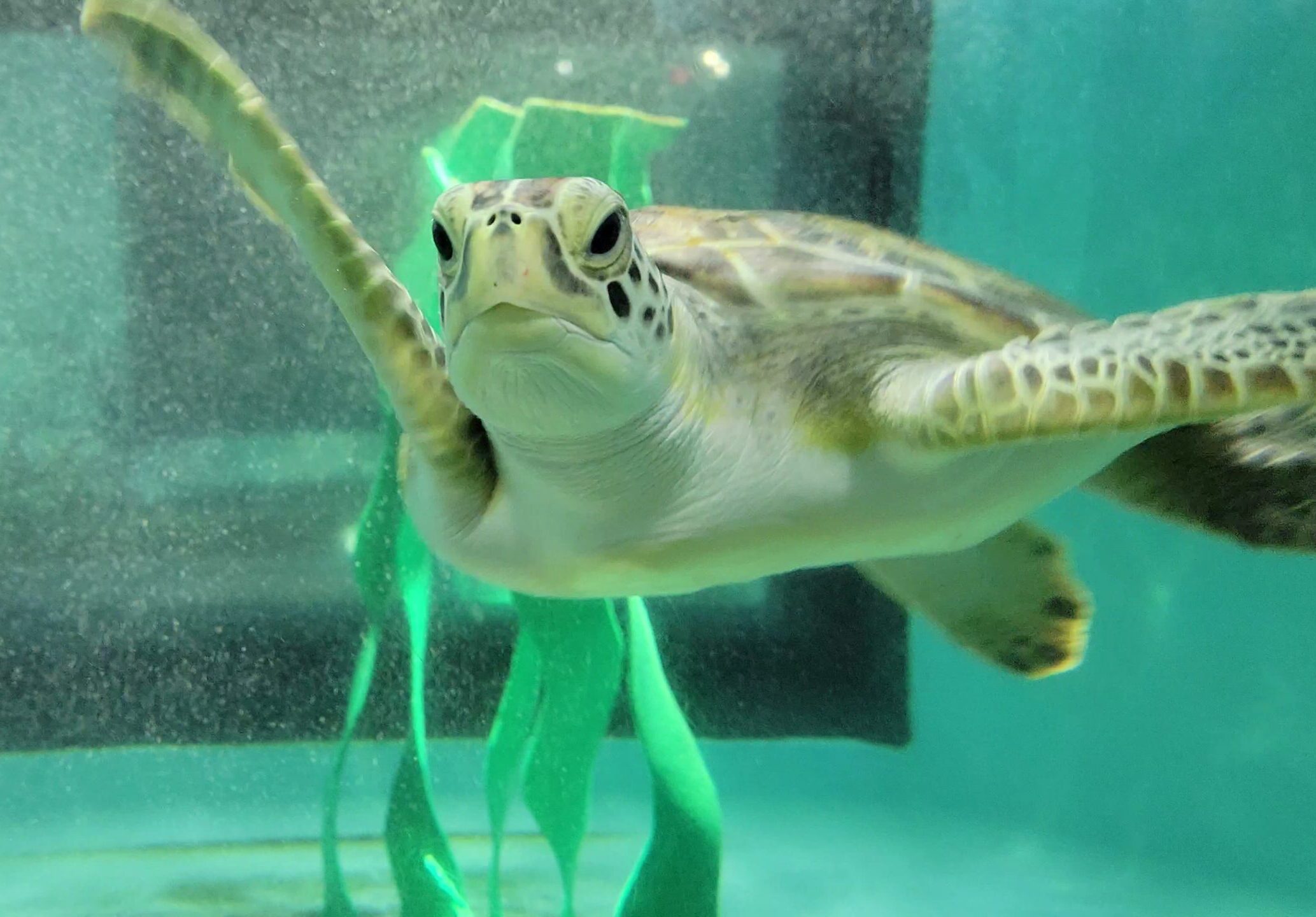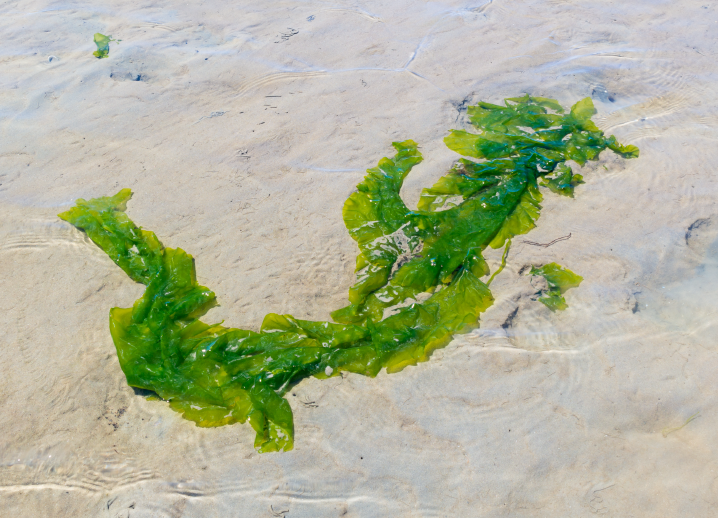Our city is an urban environment that naturally incorporates the outdoors in almost every aspect. Here, nature is all around us — we kayak on Shem Creek, dine waterside with family and friends and hike along nature trails on the weekend. In Charleston, nature is truly part of our everyday lives.
However, if we look closer at the tiny, individual pieces that create these daily experiences, we may be surprised to see the parts that make up the whole. For example, when we’re at the beach, we walk by something that’s so small, yet so crucial to a juvenile green sea turtle’s diet: a type of algae called ulva.
The Lettuce of the Sea
Known more commonly as “sea lettuce,” ulva is a type of macro algae (seaweed) found worldwide that becomes prevalent along the South Carolina coast as the weather warms up. Incredibly thin (only two cells thick!), ulva resembles wet, green tissue paper with wavy edges that can be easily torn apart. Growing up to two feet in length and typically in large masses, ulva is often found on docks, oyster reefs and rocks. It can also be found free-floating, which is what we most commonly see on our beaches!
 Ulva resembles wet tissue paper.
Ulva resembles wet tissue paper.A Turtle Snack
While you can find ulva on our beaches, you can also spot it growing next to the Aquarium! The Sea Turtle Care Center™ team gathers the ulva once it’s mature, rinses it off with freshwater and offers it to our patients as na enrichment food item. Since it is familiar to them, ulva also encourages our newer green sea turtle patients to start eating again after admit, helping to jumpstart their rehabilitation journey.
 A green sea turtle patient in our Care Center.
A green sea turtle patient in our Care Center.Although small, this alga plays a vital role for sea turtles and offers us a new perspective: We view the natural world in a big picture way, but if we look closer, we’ll see all of the parts that make up a whole lot of wonder.
And, while Charleston may be an urban environment, nature continues to thrive alongside us thanks to all of those small pieces that fall gently into place.
A special thank you to our experts, Ashley Wright (sea turtle biologist), Whitney Daniel (veterinary assistant) and Grace Buschiazzo (sea turtle biologist) for their time and knowledge in creating this blog.
Do you have more questions for our experts?
Published April 28, 2023
All sea turtle conservation work is authorized by the SC Department of Natural Resources Marine Turtle Permit No. 2023-0004.


